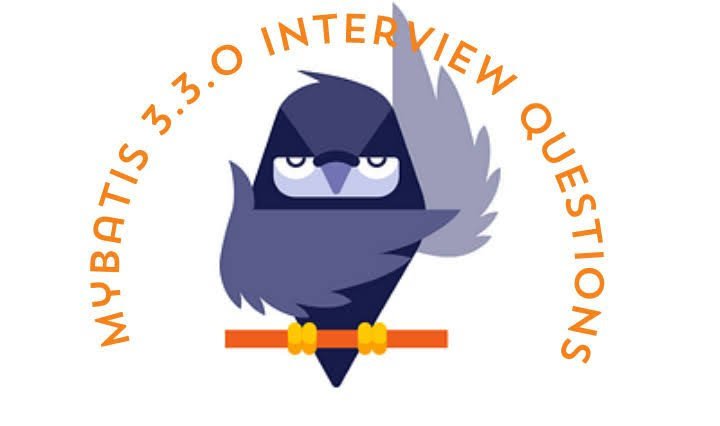
Introduction
Getting ready for a technical interview? If you’re diving into the world of MyBatis, specifically version 3.3.0, then you’ve come to the right place. MyBatis is an important Java-based persistence framework that simplifies working with SQL databases. When applying for a role that requires MyBatis skills, you’ll often be faced with specific questions around its capabilities, configurations, and the changes introduced in version 3.3.0.
In this blog post, we’ll explore some common MyBatis 3.3.0 interview questions to help you prepare and boost your confidence for your next technical interview. We’ll cover everything from basic concepts to some advanced features, and I’ll throw in a few tips on how to impress the interviewer.
What is MyBatis, and Why is It Used?
MyBatis is an open-source persistence framework that allows you to interact with SQL databases using simple XML or annotation configurations without having to write much boilerplate code. Unlike other Object Relational Mapping (ORM) frameworks like Hibernate, MyBatis gives you complete control over your SQL queries. You can map Java objects to SQL statements, allowing you to work more seamlessly with relational data.
Why Use MyBatis?
- Fine Control Over SQL: MyBatis allows developers to write their own SQL queries, making it easy to perform complex database operations.
- Easy Mapping: XML or annotations allow mapping of SQL statements directly to Java methods, eliminating repetitive code.
- Flexibility: Compared to full ORM frameworks, MyBatis is more flexible and is suitable for applications that have complex queries.
Common MyBatis 3.3.0 Interview Questions
1. What Are the New Features Introduced in MyBatis 3.3.0?
MyBatis 3.3.0 introduced several improvements to enhance usability and performance. Here are some notable updates:
- Lambda Support: MyBatis 3.3.0 improved support for Java 8 Lambdas, which makes code more readable and less verbose.
- Multiple Result Set Mapping: Enhanced support for mapping multiple result sets to complex Java objects.
- Error Handling Improvements: Improved error messages and better debugging information.
When answering this question, make sure you also relate why these features are useful. For example, “Lambda support allows developers to write cleaner code, which ultimately reduces errors and makes it easier to maintain.”
2. How Does MyBatis Compare to Other ORM Frameworks?
Compared to Hibernate or JPA, MyBatis provides more control over SQL queries, making it preferable for developers who need to write custom queries. MyBatis doesn’t impose any constraints on your SQL, which is particularly useful when working with legacy databases.
Key Points to Mention:
- SQL Control: MyBatis allows you to write raw SQL and doesn’t abstract SQL generation, making it highly customizable.
- Lightweight: MyBatis is lightweight, as it does not come with the complexity of a full ORM.
3. Explain the Working of MyBatis Mappers
Mappers in MyBatis are interfaces that are used to link Java methods to SQL queries. These SQL queries can either be written in XML files or directly as annotations.
- XML-Based Mappers: The XML configuration contains the SQL statement with placeholders for parameters.
- Annotation-Based Mappers: You can add the SQL query directly as an annotation on a Java method in the Mapper interface.
During an interview, explain that the flexibility of using either XML or annotations helps developers choose whatever works best for their project.
4. How Does MyBatis Handle SQL Injection?
MyBatis uses # parameters in SQL statements to prevent SQL injection. The # placeholder safely binds values to prevent any risk, whereas $ is used for dynamic SQL and should be used cautiously.
Example:
xml
Copy code
<select id=”selectUser” parameterType=”int” resultType=”User”>
SELECT * FROM users WHERE id = #{id}
</select>
Using #{id} ensures that the parameter value is safely handled and prevents SQL injection attacks.
5. What Is the Role of SqlSession in MyBatis?
The SqlSession interface is central to MyBatis. It represents a single-threaded session for executing commands against the database. It is responsible for:
- Executing SQL queries.
- Managing transactions.
- Mapping Java objects to database records.
You should always ensure the proper closing of SqlSession after it’s used. You could mention that improper handling of sessions might lead to resource leaks, which is a critical point for an interviewer.
6. What Is Result Mapping in MyBatis?
Result mapping is the process of converting database rows into Java objects. This is done through:
- <resultMap> Element: Used in XML configuration to explicitly specify how columns map to fields or properties.
- Annotations: You can also use annotations in Java to achieve the same.
7. Explain MyBatis Configuration File
The MyBatis configuration file (mybatis-config.xml) is the core part where global settings are defined:
- Database Environment Configuration: Includes settings like data source and transaction manager.
- Type Alias Configuration: Provides aliases for fully qualified class names to simplify mapping.
Tips for Answering MyBatis Interview Questions
- Be Practical: Whenever possible, provide practical examples of how you have used MyBatis in previous projects.
- Talk About Challenges: Discuss challenges you faced, such as optimizing complex SQL queries, and how MyBatis helped solve them.
- Mention the Flexibility: Highlight MyBatis’ flexibility in terms of SQL query control and integration with legacy systems.
Conclusion
Mastering mybatis 3.3.0 interview questions is a valuable skill for Java developers who work with relational databases. Understanding the basics, the new features, and how to effectively map SQL to Java will not only help you answer interview questions confidently but will also make you a more versatile developer. Hopefully, these commonly asked MyBatis interview questions and answers have given you a good starting point.
Keep in mind that every interview is different, and the best way to prepare is by practicing hands-on with MyBatis, exploring its features, and being ready to demonstrate your knowledge practically.
FAQs
1. What is the difference between # and $ in MyBatis?
- The # is used to safely bind parameters, preventing SQL injection. The $ allows for raw value substitution, which should be used with caution.
2. Can MyBatis be used with Spring Boot?
- Yes, MyBatis integrates well with Spring Boot through mybatis-spring-boot-starter, simplifying configuration and usage.
3. What are MyBatis Plugins?
- Plugins in MyBatis allow developers to intercept and modify core functionalities such as query execution, parameter processing, and transaction management.
4. How does MyBatis manage cache?
- MyBatis has two levels of caching: a first-level cache tied to a SqlSession and a second-level cache shared among SqlSessions. Caching can reduce the frequency of database access.
5. Does MyBatis support lazy loading?
- Yes, MyBatis supports lazy loading, which can be enabled in the configuration to load related objects only when required.
6. What is a TypeHandler in MyBatis?
- TypeHandlers in MyBatis are used to map Java types to database types, ensuring proper conversion when setting parameters or fetching results.







